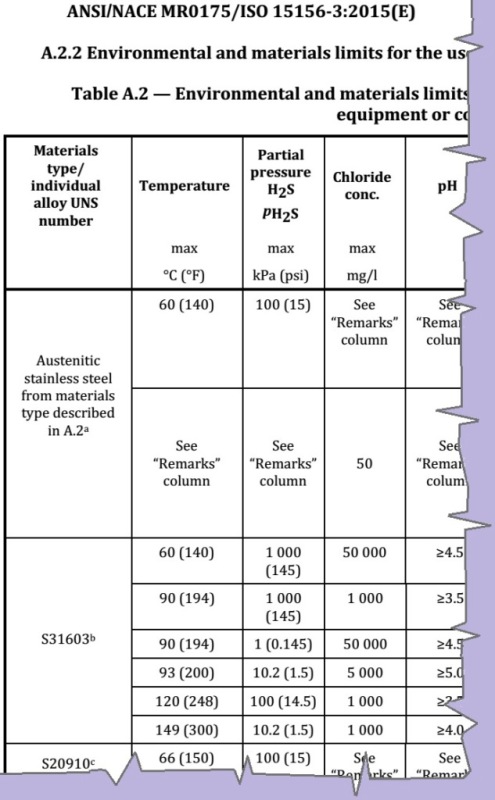Thank You again, Steve!
I got your points, they sound consistent and result useful to me; but, sorry, I have to disagree about typographical readability: I remain convinced that it would be clearer if the proper cells were merged into one… more or less like in the attached cutout picture:
Anyway, I still can’t understand how Table D.1 could help in identifing which UNS number is associated with which table.
Table D.1 just provides ”a link between the UNS numbers used in the tables of Annex A and the chemical compositions of the alloys to which they refer”, but some cast grades (e.g.: J92900, J92600) are mentioned only here and in Table A.5 - Environmental and materials limits for austenitic stainless steels used as seal rings and gaskets. What if they are used as different components?
Moreover, other grades are mentioned in Table D.1 only (e.g.: J92800) or not mentioned at all in the whole standard (e.g.: J92910, J92700).
I understand, me too, that those cases should fall within Table A.2 - Environmental and materials limits for austenitic stainless steels used for any equipment or components , in the first general category of “Austenitic stainless steel from materials type described in A.2”: I just wanted to be sure about this (one never can tell, it's always easy to ignore or forget some little sub-sub-clause or note under a table of the standard) ;-)
Best Regards,
’NGL

![[bugeyed] [bugeyed] [bugeyed]](/data/assets/smilies/bugeyed.gif)
